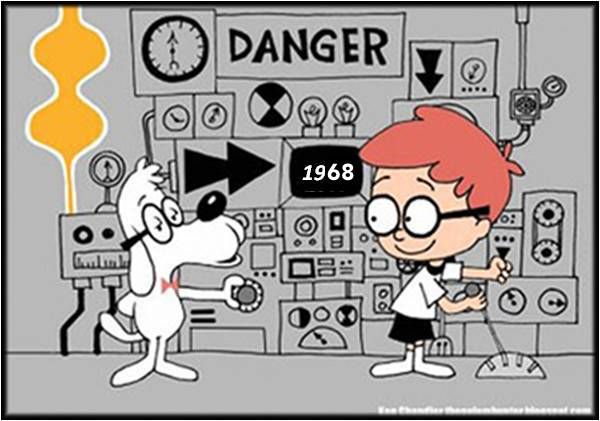
|
|
Time Travel — Using the Wayback Machine

Intro
Have you ever tried to open a web page only to find it’s gone? The
Wayback Machine can help. It’s a free archive run by the Internet Archive
that stores snapshots of websites taken over time. Think of it like a time machine for the
web. It boasts that it has over a trillion archive web pages saved over time.
The name comes from the old cartoon series of the same name from the 1960's. 'Peabody's
Improbable History' was a segment of The Rocky and Bullwinkle Show. Professor Peabody (the
dog) and Sherman (the student) would use the Wayback Machine to go back in time for a
history lesson.
What the Wayback Machine does
Enter a website address (for example, example.com) and choose a date.
The Wayback Machine shows the version of that site captured on that day or as close as it
can get. You can watch how pages, news articles, or company sites looked years ago — like
what Amazon or Pizza Hut looked like in the 1990s. You can literally browse the web at that
point in time.
How to use it — quick steps
- Go to the Internet Archive's Wayback Machine website. web.archive.org
- Type the full web address (URL) into the search box.
- Pick a year and a snapshot (a saved copy) from the timeline or calendar.
- Click the snapshot to load the archived page.
Extra features you should know about
Save Page Now: If you find a page you want to keep, the Wayback
Machine has a "Save Page Now" feature. It lets you force a snapshot to be created
immediately so the page won’t disappear if the original site goes offline.
Search and browse history: The archive stores many snapshots
for popular sites. You can move through time using a calendar view and compare how a page
changed over months or years.
Not everything is archived. Some sites block the archive, some dynamic content (like videos, interactive features, or parts loaded from other servers) may not work, and images or styles might be missing.
Why the Wayback Machine is useful
People use it for many reasons:
- Research — track how public information changed.
- Restoring old designs — hobbyists rebuilding vintage websites or old computers often use archived pages to get the authentic look.
- Evidence — archived pages can help show what was published at a particular time.
- Education — great for history or media studies projects.
Limitations and important facts
Here are extra facts worth knowing:
- The Wayback Machine is run by the Internet Archive, a non-profit that stores books, audio, video, and web pages.
- Some sites are excluded because of a website's robots.txt file or because the site owner asked the archive not to store copies. The archive has changed how it handles robots rules over time.
- Dynamic or database-driven pages (for example, social media feeds or search results) are hard to archive correctly, so snapshots may look different from the live site.
- When you cite an archived page for school or research, include the snapshot date and the Wayback Machine URL for that snapshot so others can find the exact version you used.
Quick example (what to enter)
URL: https://www.example.com Action: Search → choose a date on the calendar → click a snapshot to view Save: Use "Save Page Now" to create a snapshot of the current page
If you enjoy old tech, restoring vintage computers, or just love seeing how the web has changed, the Wayback Machine is a fun and powerful tool. Try it — it's like traveling back to old versions of the internet.

